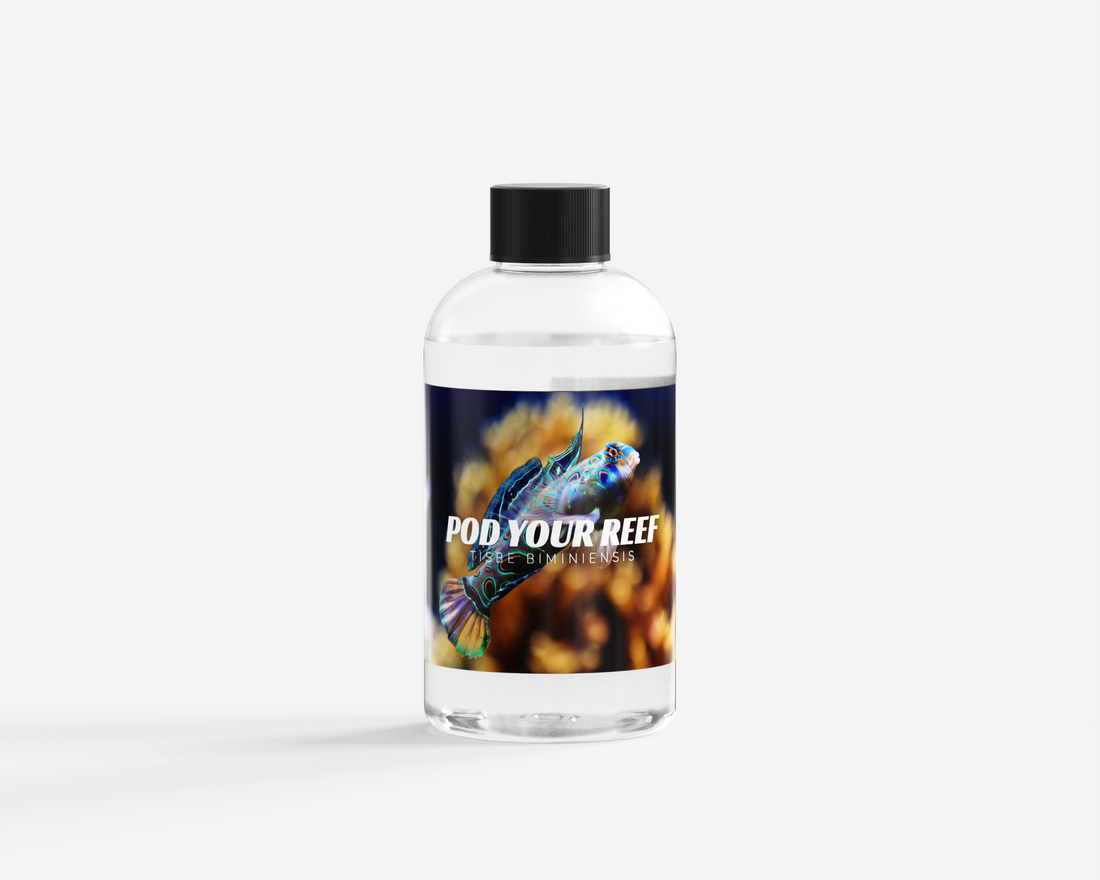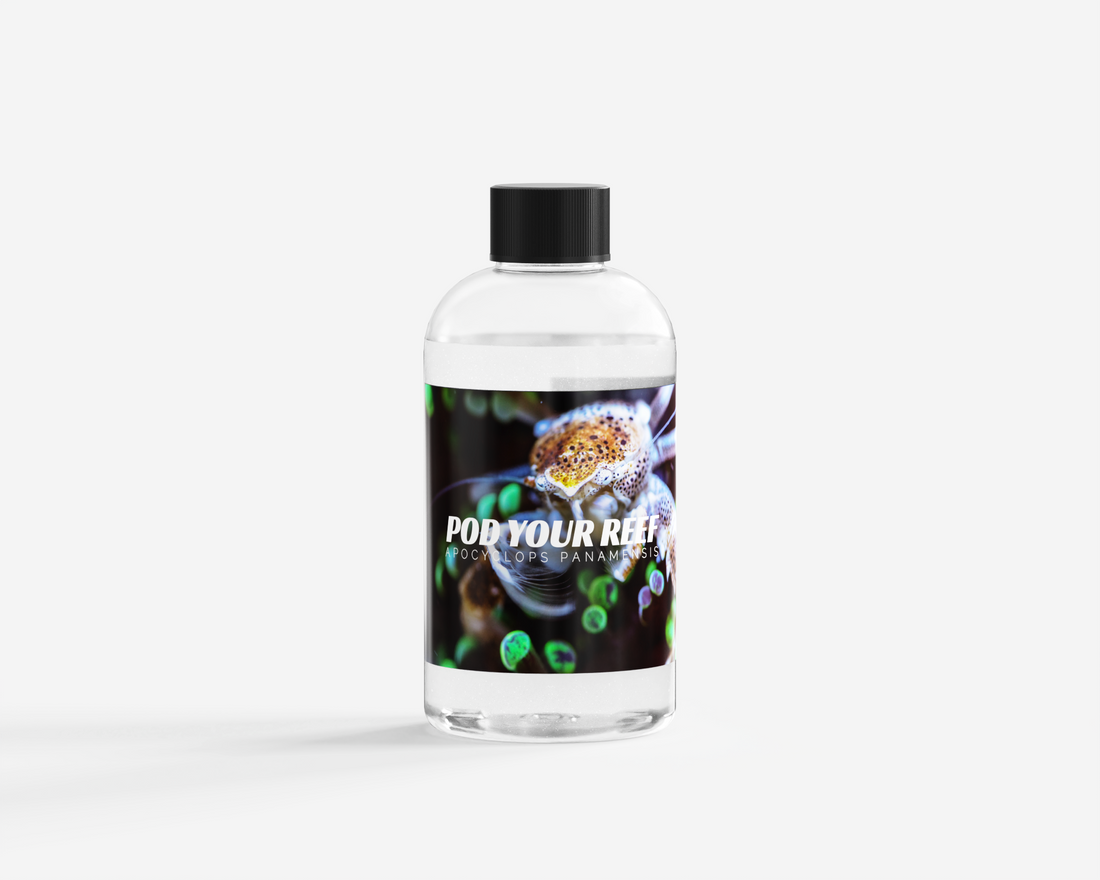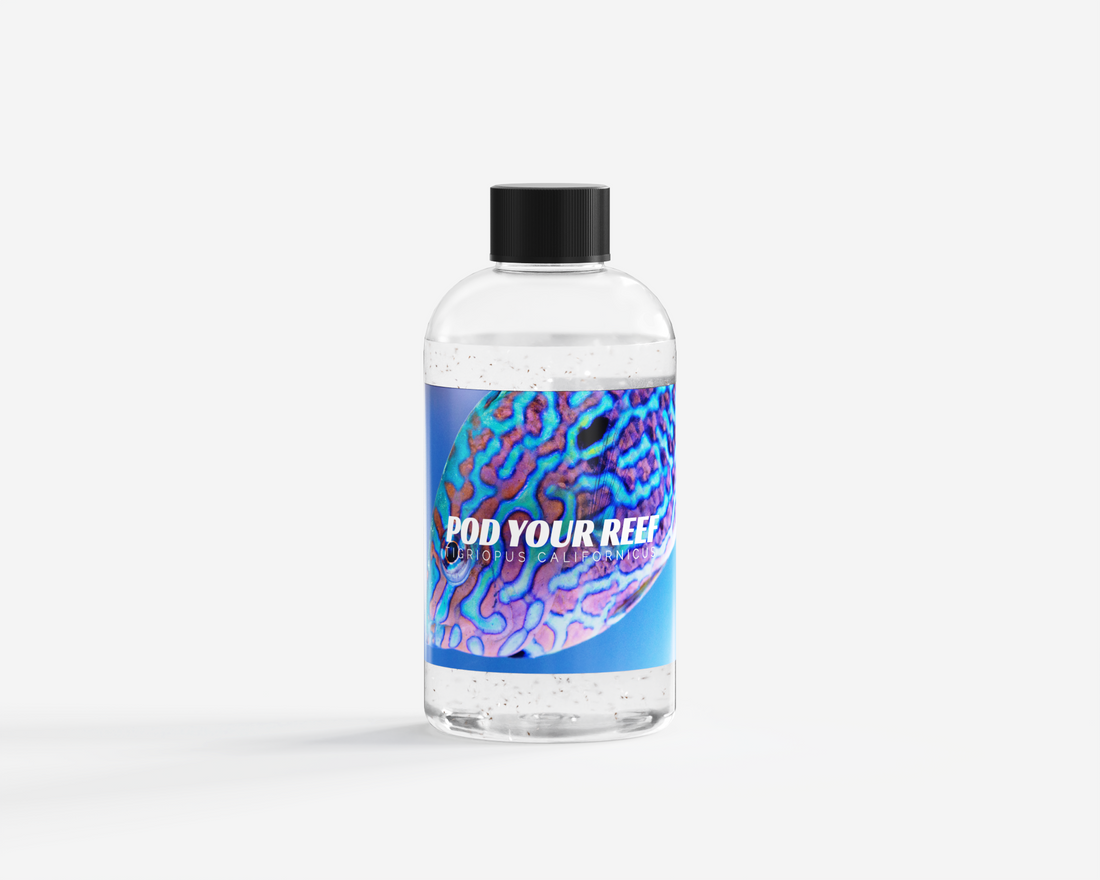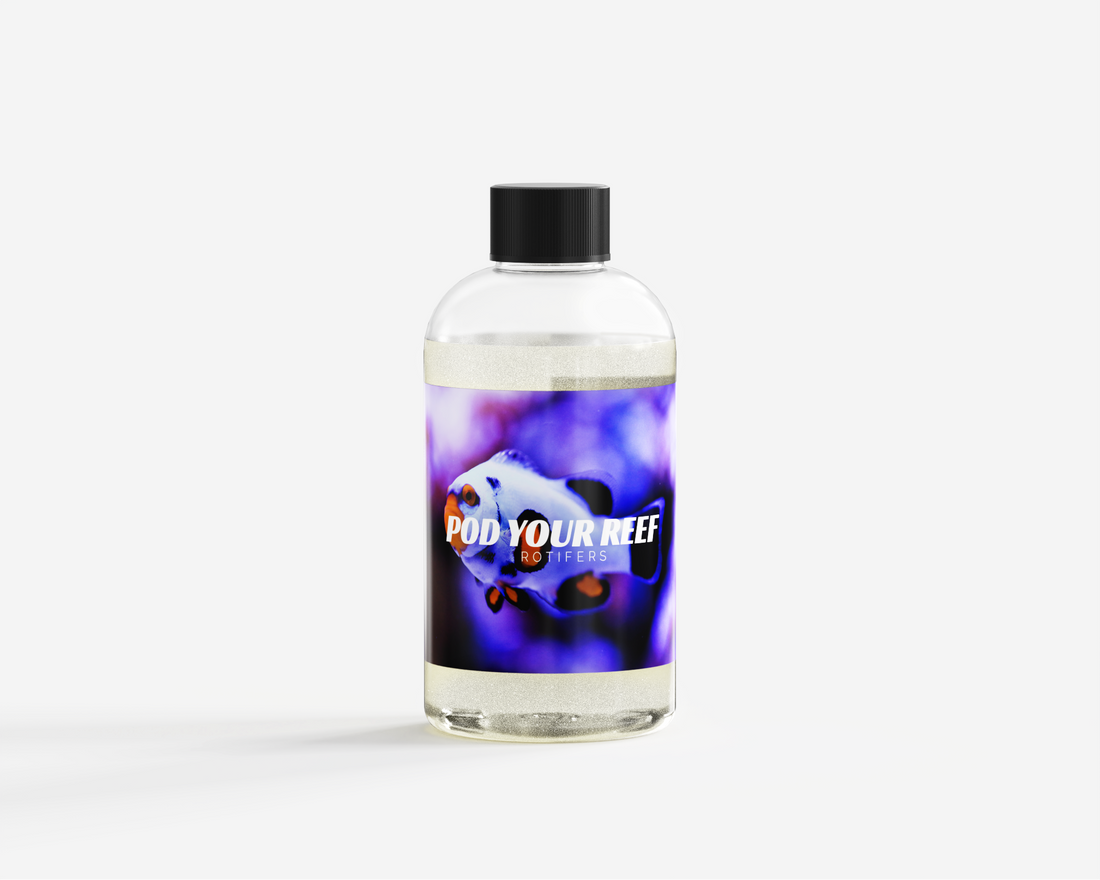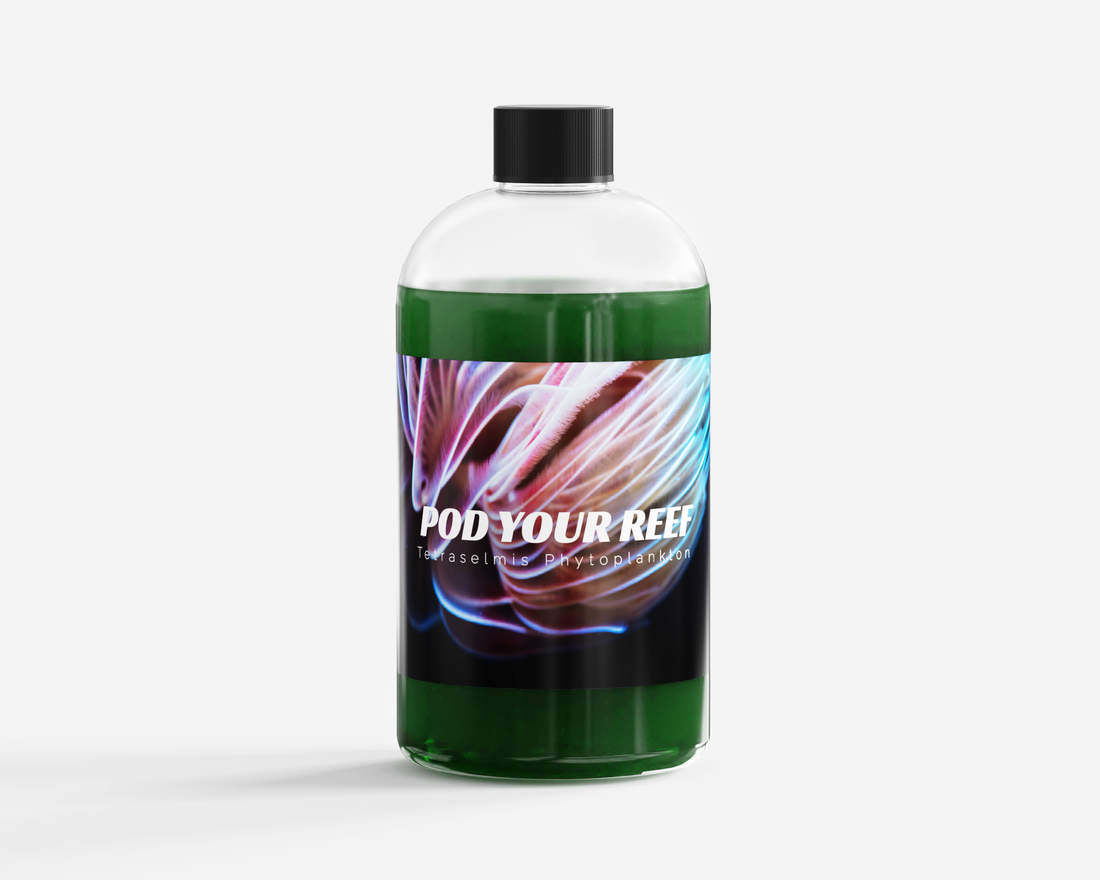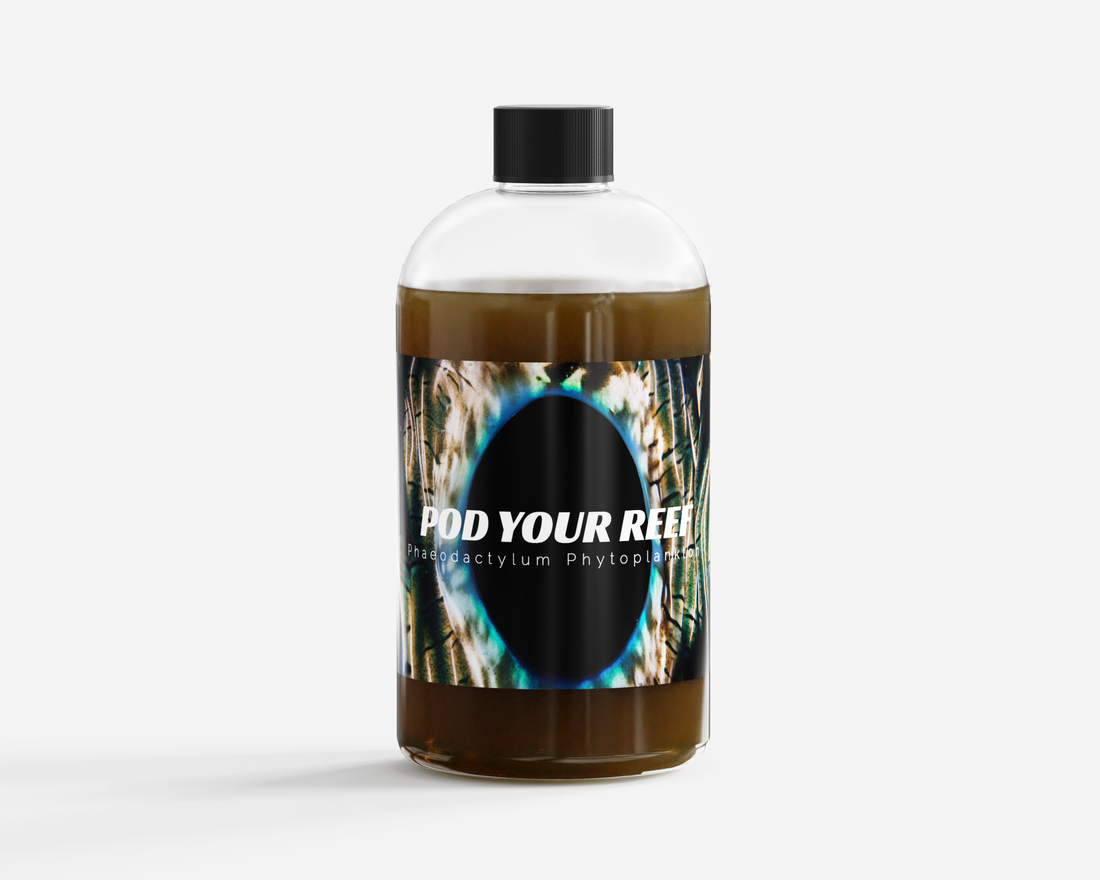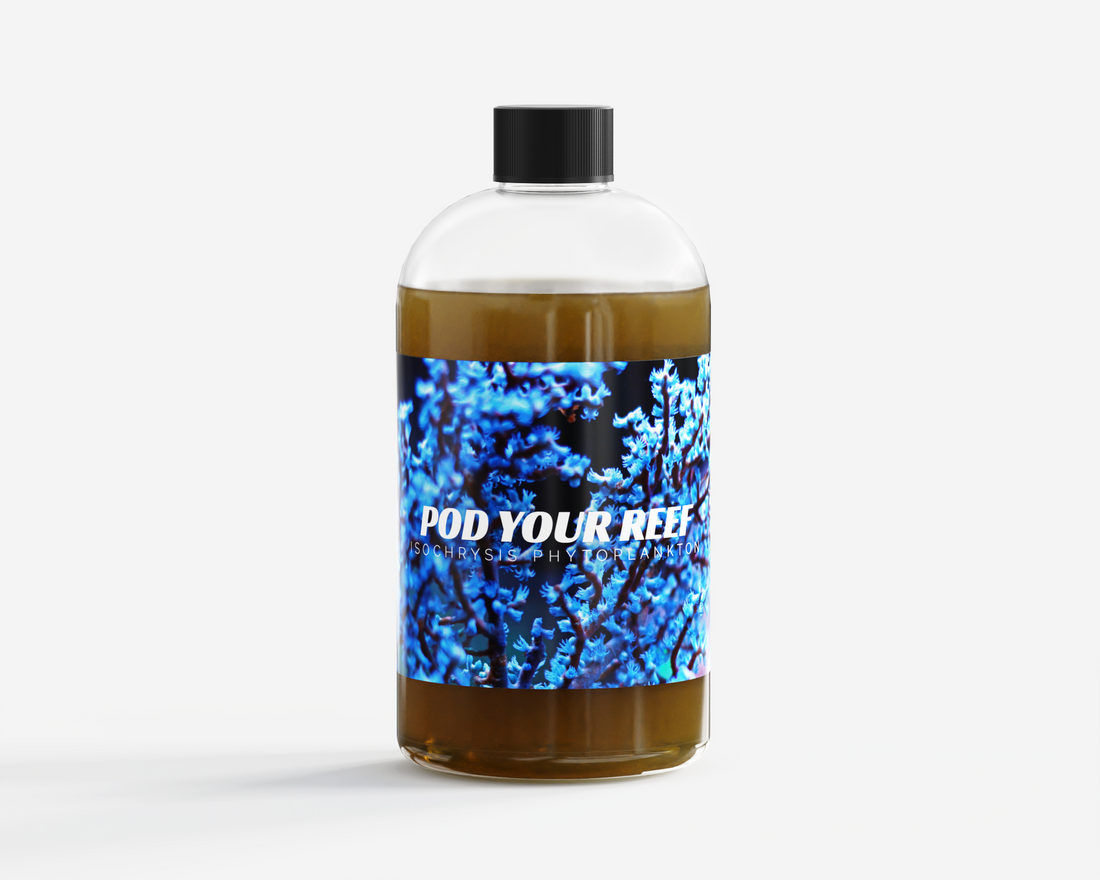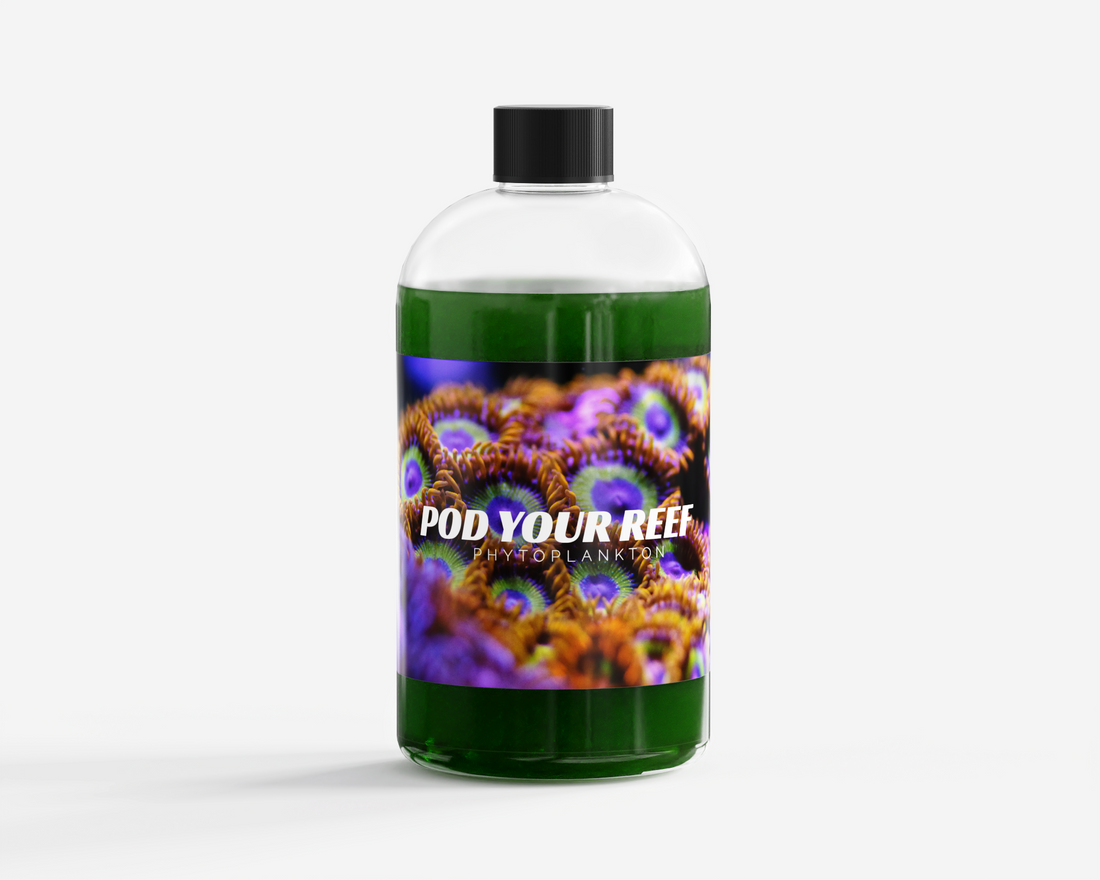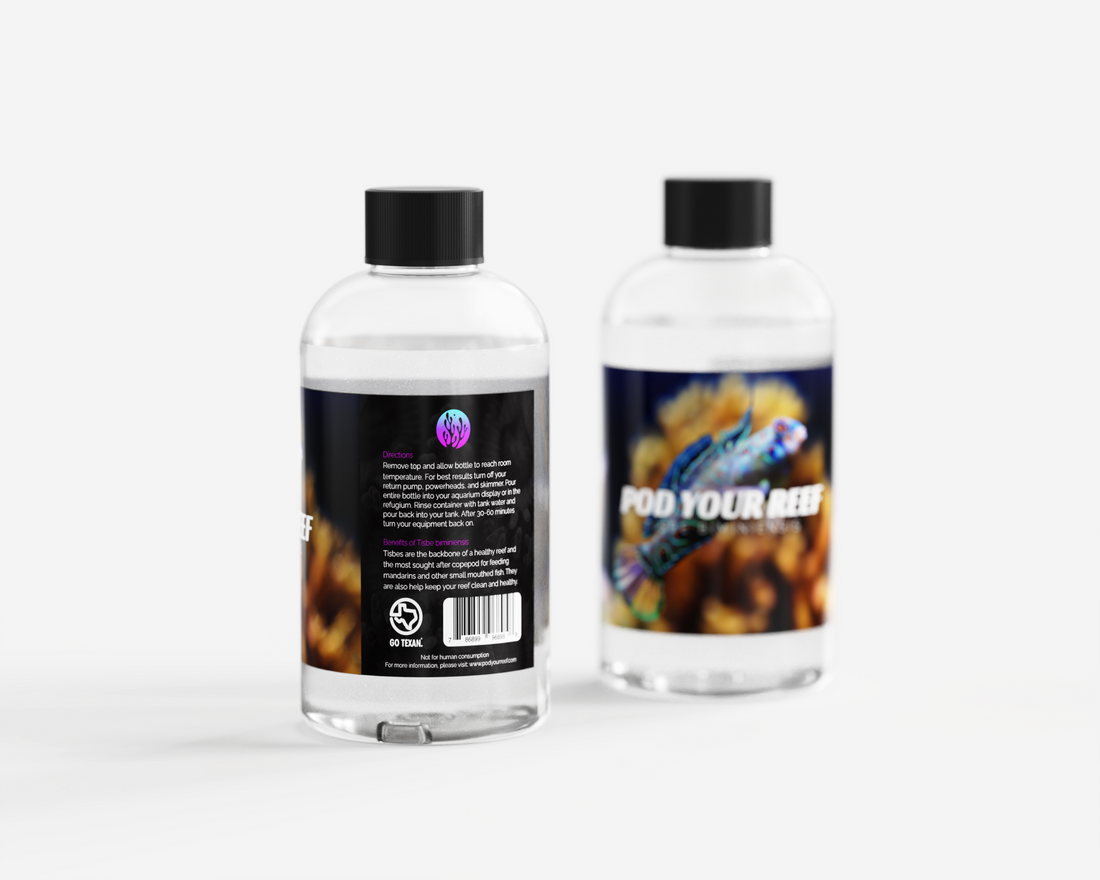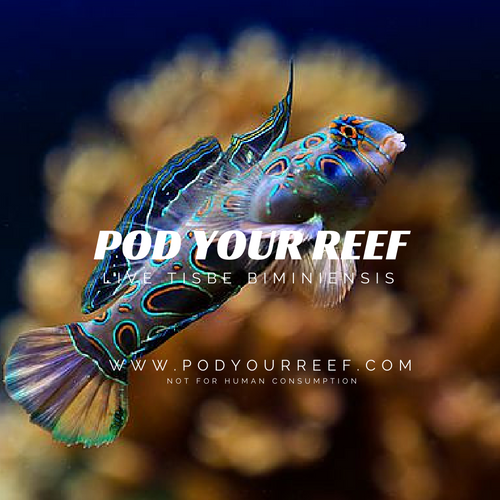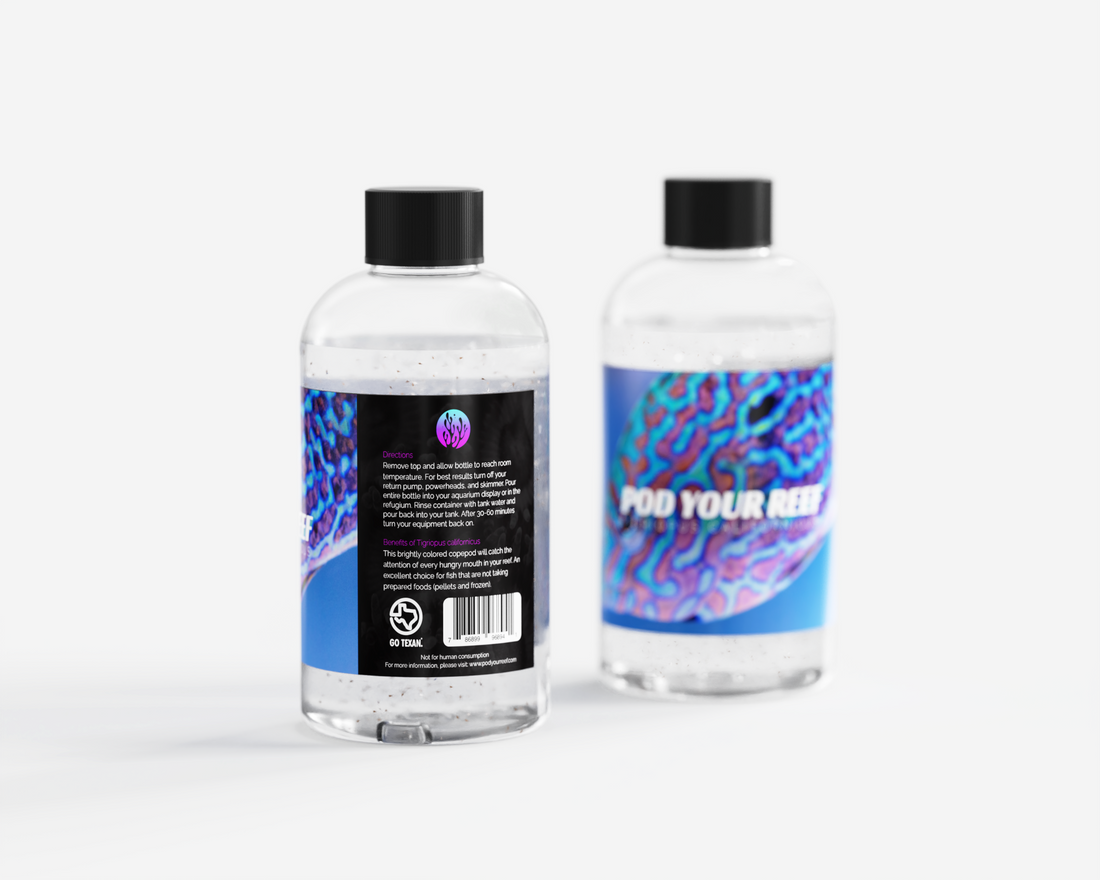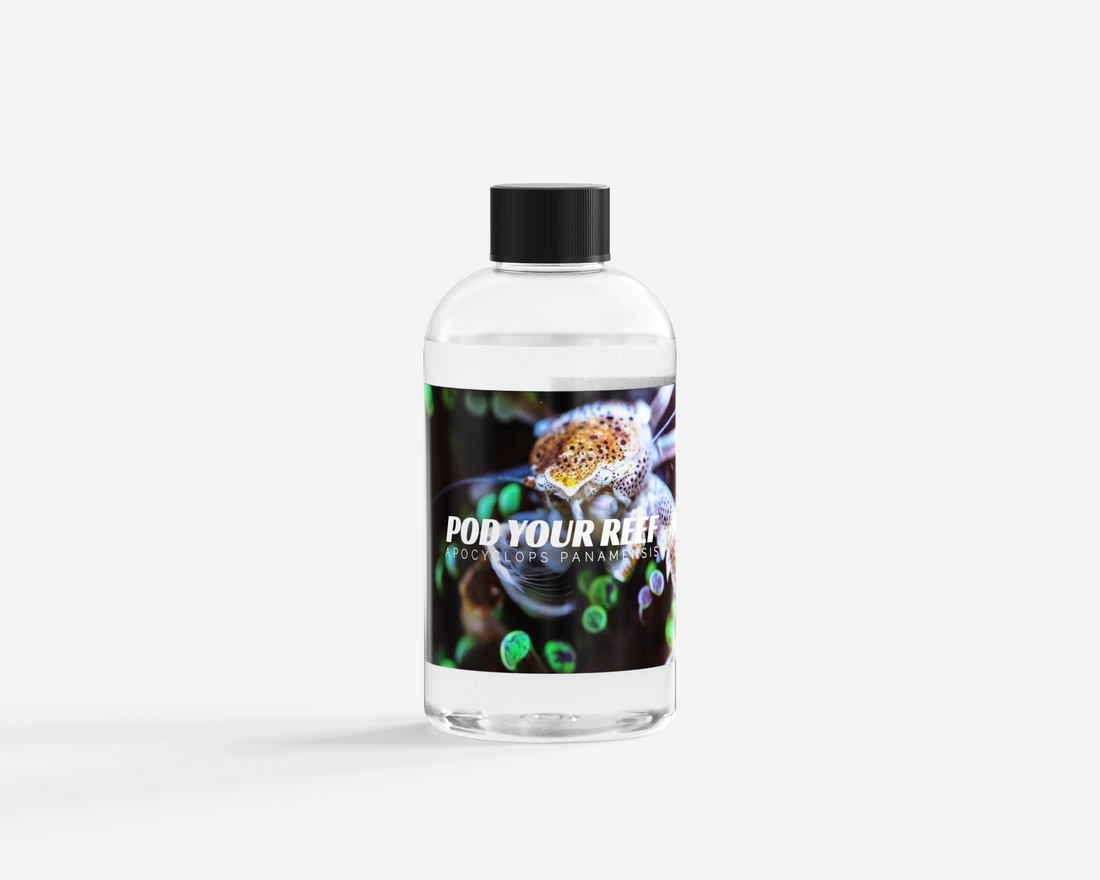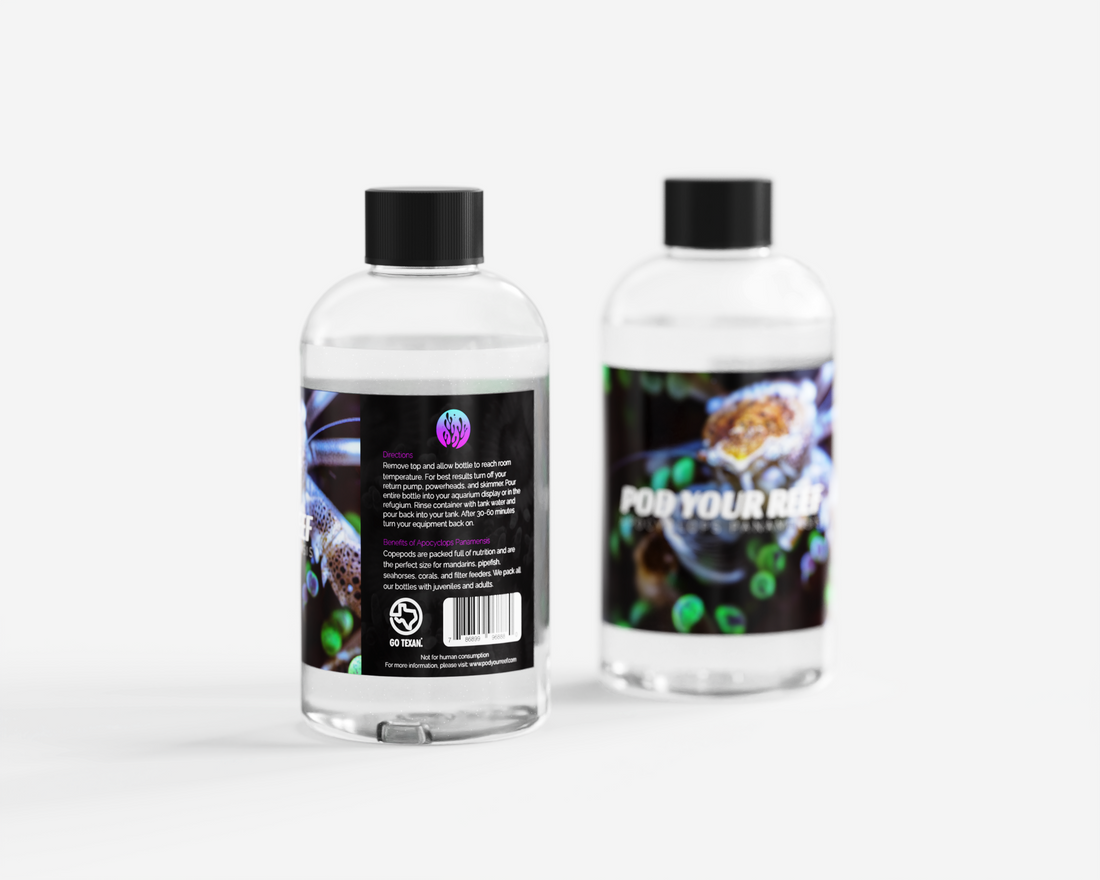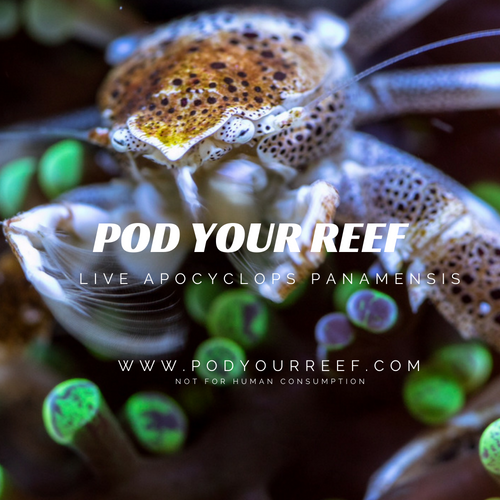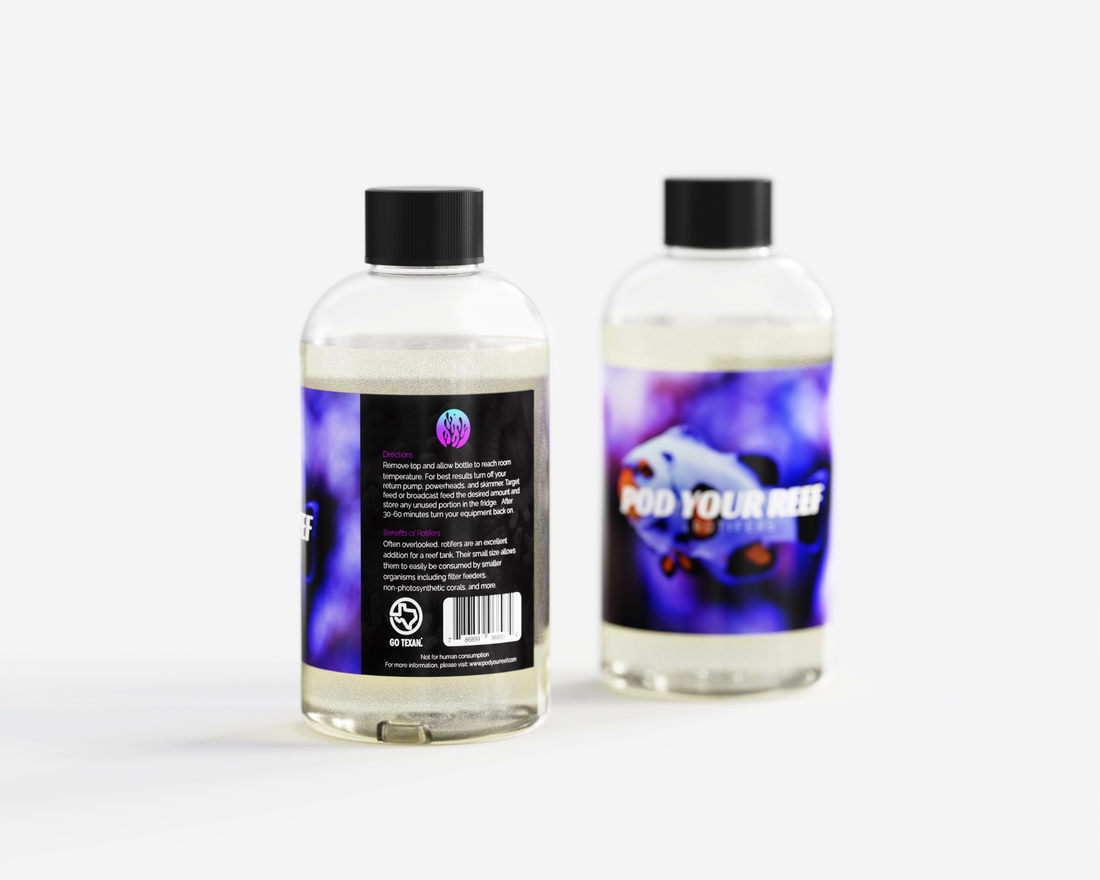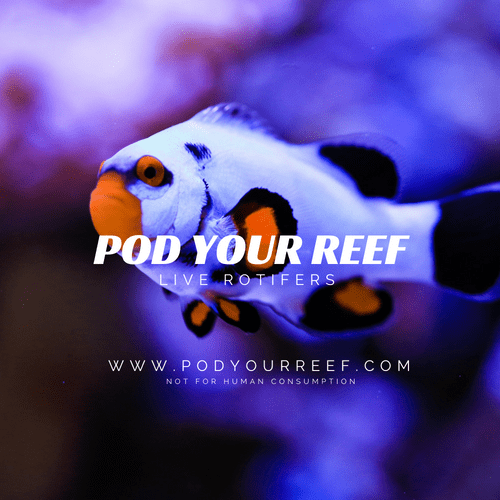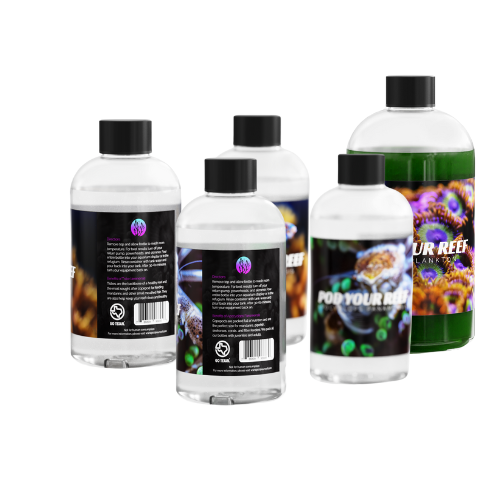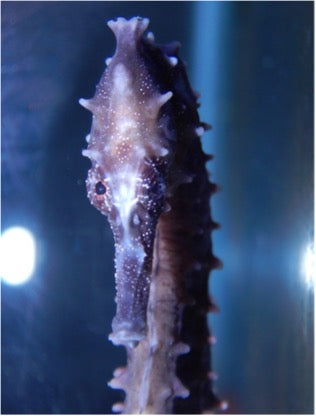
Care
Golden Fat Live Feeds: The Key to Fat & Happy Seahorses
Golden Fat Live Feeds: The Key to Fat & Happy Seahorses
Syngnathids, or seahorses/pipefish, are amongst the most iconic and sought after family of fishes in the reef hobby. So many novice and experienced aquarists alike have struggled to keep seahorses alive due to the unique needs of the sygnathin physiology. Firstly, they are extremely poor swimmers and require low-flow water in order to orient themselves and obtain food. They are also relatively intolerant to both poor water quality as well as abrupt fluxes in water quality. They lack scales and therefore are also prone to a variety of skin and intestinal diseases.
Sygnathids react poorly to most medications and require a well-aged tank with an established and beneficial microbiome. The sygnathin metabolism is designed for round-the-clock ‘grazing’, which is only possible in tanks well-colonized by copepods, rotifers and other microfauna.
Furthermore, syngnathids require a diet rich in polyunsaturated fatty acids, such as eicosapentaenoic acid (EPA) and docosahexaenoic acid (DHA) in order to mature properly and to maintain weight/color. So even though seahorses will eat adult artemia and freshwater mysis, they will not necessarily get much nutrition from them unless those prey items are ‘gut-loaded’ with Golden PUFA Fats.
Over the last few decades, there have been several advances in the aquaculture of dozens of syngnathid species. These advancements include the inclusion of macroalgae, microalgae and copepods in seahorse production systems. By including these other organisms, aquarists can better-simulate the level of biocomplexity for which syngnathids have evolved to thrive in.
Reef-grown Sea Veggies (Ulva, Chaetomorpha, Gracilaria, Halymenia) provide structure for seahorses to anchor to, consume toxic nitrogenous wastes and act as a substrate for copepods and beneficial bacteria. Seeding copepods and rotifers into a seahorse tank ensures a robust supply of these microfauna for the seahorse to constantly graze on. Dosing seahorse tanks with Golden Fat T-ISO microalgae ensures that these microfauna are gut-loaded with Golden PUFA Fats. All these advancements have not only led to increased longevity in wild-caught seahorses but has allowed for commercial-scale farming of popular species such as the lined seahorse (Hippocampus erectus), the tigertail seahorse (Hippocampus comes), the yellow kuda seahorse (Hippocampus kuda), the Brazilian seahorse (Hippocampus reidi), the blue-striped pipefish (Doryrhamphus excisus) and the banded pipefish (Dunckerocampus dactyliophorus). In order for the aquarium industry to continue seeing and breeding these incredible creatures, we must know all we can about optimizing their nutrition through Golden Fat Live Feeds.
Syngnathid Nutritional Needs
Syngnathids as a whole possess no significant cardiac stomach and have a short intestinal tract. This means they are designed to constantly be consuming multiple easily-digestible prey items. This is in severe contrast to marine herbivore species such as acanthurans/siganids (surgeonfish/rabbitfish) which have a fermentative stomach and long intestinal tract for constant consumption of difficult-to-digest forage. It is also in contrast to the gastrointestinal anatomy of marine carnivores such as serranids (anthias, grouper, basslets) which have a large cardiac stomach for processing large, periodic meals. As a result, providing a constant supply of food items to seahorses is but the initial battle. The consciousness aquarist must also ensure that those prey items are as nutritionally complete as possible, considering syngnathids have little to no gastrointestinal infrastructure to deal with inferior feeds.
Fatty acid content is perhaps the most important dietary consideration when housing or cultivating seahorses. Fatty acids (lipids) act as high-capacity energy storage for organisms. But like all fuel, all fatty acids are not nearly created equal. Fatty acids are composed of long chains of carbon atoms with varying degrees of hydrogen atoms attached. The more double bonds a fatty acid possesses in between its carbon atoms, the less the lipid is ‘saturated’ with hydrogen atoms. Fatty acids with many double bonds are termed polyunsaturated fatty acids (PUFAs)--and these are the metabolic golden currency of life.
PUFAs, especially eicosapentaenoic acid (EPA) and docosahexaenoic acid (DHA)1, are integral to the early development and long-term physiology of all organisms. Besides high-capacity energy storage, they play an intimate role in the regulation of inflammation, blood cholesterol, membrane fluidity, embryonic development etc... Marine organisms as a whole, broadly lack the ability to synthesize PUFAs from inferior highly unsaturated and monounsaturated fatty acids.
This deficiency is even more profoundly expressed in syngnathid nutritional needs where PUFA deficiencies can acutely manifest symptoms such as weight loss, discoloration or lethargy.
Realizing the essential nature of golden PUFA fats has not only allowed aquarists to keep sygantids alive longer in display aquaria, but has allowed for the commercial cultivation of several popular species. It has been well demonstrated how standard live feeds (Artemia2) are naturally too deficient in PUFAs to satisfy the needs of several Hippocampus species. In such studies, both broodstock and juvenile seahorses benefited in terms of weight, growth, spawning performance and overall survival, when fed Artemia enriched with microalgae or an oil immersion product.
T-ISO: The Golden Fat Microalgae
Periodically dosing one's tank with PUFA-producing microalgae is one way to fortify the diet of any captive syngnathid. Microalgae are one of the few organisms which synthesize large concentrations of the PUFAs EPA and DHA. However, this golden-fat producing ability is enjoyed by only a relative few algae--and only a handful of those have been domesticated and introduced to the reef trade. This is why T-ISO is so special--for its natural golden-fat making abilities have been domesticated into a benign and delicious package!
Golden Fat T-ISO is a Perfect Microalgae for a Seahorse Tank:
- Enjoys the same temperature and salinity range of most syngnathid species in the hobby
- Enjoys the same lighting as reef aquaria.
- Consumes nitrates and phosphates
- Free-swimming and does not attach to glass or cloud
- Feeds corals, sea fans, clams, sabellid worms and other accessory display animals.
1 Commonly marketed to the public as ‘salmon, cod or krill oil’ in nutraceuticals.
2 Brine shrimp
But most importantly, dosed T-ISO in the aquarium will be ravenously consumed by rotifers, copepods and other microfauna. It is in these grazeable food-items that Golden Fats must accumulate in order to ensure proper nutrition of the seahorse.
Do Seahorses Need Pods?
Due to the nutritional sensitivities of syngnathids described above, copepods are the ideal live feed for this family of fish. Whereas larger crustaceans, like Artemia, can only be consumed by larger seahorse species, adult copepods can be consumed by even the smallest. Due to their extremely small size (25-40um) copepod nauplii can be fed to post-hatch syngnathid larvae. 21st Century techniques for the mass cultivation of calanoid copepods has allowed for several new species to be aquacultured. Even adult copepods are small enough to fit into the finicky syngnathid mouth. Moreso, copepods have a ‘pep-and-scoot’ locomotion--making them an irresistible seahorse snack. Unlike Artemia, copepods are able to elongate and desaturate fatty acids, therefore being naturally richer in the precious Golden Fats which Sygnathids so desperately need. They also contain enzymes, probiotics and proteases which act to fortify and assist in digestion--something of extreme importance to the relatively simple syngnathid gastrointestinal system.
There are countless reasons why copepods such as the cyclopoid Apocyclops panamensis as well as the harpactoids Tisbe biminiensis and Tigriopus californicus are the ideal live feed for Seahorses and Pipefish:
- They posses body tissues rich in PUFAs, proteases, probiotics, prebiotics and enzymes
- They are soft-bodied with no hard protrusions or indigestible shells
- Adult copepods crawl on macroalgae, rockwork and other substrates.
- Colonization of an aquarium with a robust copepod population will provide constant nutritious grazing opportunities.
- Copepods consume uneaten feed, algae, bacteria and feces--reconverting these wastes into a constant surplus of Golen Fat Rich Seahorse food.
Macroalgae: Naturalize the Hunt
Seahorses and pipefish have evolved to exist amongst vast beds of sea grasses and macroalgae. Wild sea meadows provide the continuous biofiltration, shelter, anchorage and feed needed to support the innate needs of syngnathids. Sea Vegetables (Gracilaria, Halymenia, Caulerpa Chaetomorpha) can be deployed to mimic the biofunctionality of these wild sea meadows:
- Sea Vegetables are ravenous consumers of nitrogenous wastes and
- Sea Vegetables provide structure, shelter and anchorage to seahorses and create bioactive
- Sea Vegetables act as a substrate/food source for copepods, amphipods and other seahorse prey items.
- Mounting evidence that Macroalgae fosters a favorable microbiome which suppresses disease-causing
Xu et al 2010 demonstrated the effective benefit of polyculturing Hippocampus erectus with the macroalgae species Chaetomorpha linum and Gracilaria tikvahiae:
“Increases in wet mass and standard length for the seahorses were significantly higher in the tanks with macroalgae than those without macroalgae. The seahorse survivorships in the two macroalgal treatments were also significantly higher than those of the two treatments without macroalgae. In the treatments with macroalgae, the DO and pH were higher than those without macroalgae. Survival rates of seahorse were higher with than without macroalgae.” (Xu et al 2012)
Conclusion
Syngnathids are designed to be active grazers of Sea Meadows. Therefore, the conscientious aquarist is compelled to provide them with a tank stocked with macroalgae and abundant grazeable copepods. By having these functional elements established in the tank, the aquarist is assured that any Golden PUFA Fats given through feedings or microalgae dosing will be rapidly assimilated into accessible seahorse prey items. Through their unique and humble majesty, Seahorses and Pipefish will forever capture the imaginations of generations to come. Offering a continuous flow of Golden Fat Live Feeds will allow future aquarists to house syngnathid species for longer, overcome intimidating disease and introduce new sustainably-derived syngnathid species to the hobby. It has never been a more exciting time to be a seahorse keeper.
Literature Consulted
Balcázar, J. L., Lee, N. M., Pintado, J., & Planas, M. (2010). Phylogenetic characterization and in situ detection of bacterial communities associated with seahorses (Hippocampus guttulatus) in captivity. Systematic and applied microbiology, 33(2), 71-77.
Buen-Ursua, S. M. A., Azuma, T., Recente, C. P., & Batatin, R. E. (2011). Effects of UV-treated sea water, chlorinated sea water, and formalin-treated copepods on survival and growth of newborn seahorses, Hippocampus comes. Israeli Journal of Aquaculture-Bamidgeh, 63.
Celino, F. T., Hilomen‐Garcia, G. V., & del Norte‐Campos, A. G. (2012). Feeding selectivity of the seahorse, H ippocampus kuda (Bleeker), juveniles under laboratory conditions. Aquaculture Research, 43(12), 1804-1815.
Chang, M., & Southgate, P. C. (2001). Effects of varying dietary fatty acid composition on growth and survival of seahorse, Hippocampus sp., juveniles. Aquarium Sciences and Conservation, 3(1), 205-214.
Deobagkar, D. D., Khandeparker, R., Sreepada, R. A., Sanaye, S. V., & Pawar, H. B. (2012). A study on bacteria associated with the intestinal tract of farmed yellow seahorse, Hippocampus kuda (Bleeker, 1852): characterization and extracellular enzymes. Aquaculture Research, 43(3), 386-394.
Faleiro, F., & Narciso, L. (2010). Lipid dynamics during early development of Hippocampus guttulatus seahorses: searching for clues on fatty acid requirements. Aquaculture, 307(1-2), 56-64.
Gardner, T. (2008). The Copepod/Artemia Tradeoff in the Captive Culture of Hippocampus erectus, a Vulnerable Species. Marine ornamental species: Collection, culture and conservation, 297.
Koldewey, H. J., & Martin-Smith, K. M. (2010). A global review of seahorse aquaculture. Aquaculture, 302(3-4), 131-152.
LePage, V. (2012). A study of syngnathid diseases and investigation of ulcerative dermatitis (Doctoral dissertation).
Lin, Q., Lin, J., & Wang, C. (2009). Biochemical composition of the wild and cultured seahorses, Hippocampus kuda Bleeker and Hippocampus trimaculatus Leach. Aquaculture Research, 40(6), 710-719.
Lin, Q., Zhang, D., & Lin, J. (2009). Effects of light intensity, stocking density, feeding frequency and salinity on the growth of sub-adult seahorses Hippocampus erectus Perry, 1810. Aquaculture, 292(1-2), 111-116.
Lin, Q., Lin, J., & Huang, L. (2009). Effects of substrate color, light intensity and temperature on survival and skin color change of juvenile seahorses, Hippocampus erectus Perry, 1810. Aquaculture, 298(1-2), 157-161.
Maclean, B. (2015). Veterinary care of seahorses.
Ofelio, C., Cohen, S., Adriaens, D., Radaelli, G., & Díaz, A. O. (2019). Histochemistry of goblet cells and micro-computed tomography to study the digestive system in the long-snouted seahorse Hippocampus guttulatus. Aquaculture, 502, 400-409.
Özdemir, N., & Fatma, C. A. F. (2018). Biochemical Composition of The Wild Long-Snouted Female and Male Seahorses (Hippocampus guttulatus Cuvier, 1829). Mediterranean Fisheries and Aquaculture Research, 1(3), 114-129.
Martin-Smith, K. M., & Vincent, A. C. (2006). Exploitation and trade of Australian seahorses, pipehorses, sea dragons and pipefishes (family Syngnathidae). Oryx, 40(2), 141-151.
Payne, M. F., & Rippingale, R. J. (2000). Rearing West Australian seahorse, Hippocampus subelongatus, juveniles on copepod nauplii and enriched Artemia. Aquaculture, 188(3-4), 353-361.
Planas, M., Chamorro, A., Quintas, P., & Vilar, A. (2008). Establishment and maintenance of threatened long-snouted seahorse, Hippocampus guttulatus, broodstock in captivity. Aquaculture, 283(1-4), 19-28.
Planas, M., Olivotto, I., González, M. J., Laurà, R., & Zarantoniello, M. (2020). A multidisciplinary experimental study on the effects of breeders diet on newborn seahorses (Hippocampus guttulatus). Frontiers in Marine Science, 7, 638.
Quintas, P., Planas, M., & Purser, G. J. (2010). The effect of Artemia enrichment on the early rearing of the pot-bellied seahorse Hippocampus abdominalis. In Aquaculture Europe 2010 Seafarming Tomorrow (pp. 1055-1056).
Saavedra, M., Masdeu, M., Hale, P., Sibbons, C. M., & Holt, W. V. (2014). Dietary fatty acid enrichment increases egg size and quality of yellow seahorse Hippocampus kuda. Animal reproduction science, 145(1-2), 54-61.
Sales, R., Mélo, R. C. S., de Moraes Junior, R. M., da Silva, R. C. S., Cavalli, R. O., Navarro, D. M. D. A. F., & de Souza Santos, L. P. (2016). Production and use of a flocculated paste of Nannochloropsis oculata for rearing newborn seahorse Hippocampus reidi. Algal Research, 17, 142-149.
Shepherd, B., Wandell, M., & Ross, R. (2017). Mating, birth, larval development and settlement of Bargibant's pygmy seahorse, Hippocampus bargibanti (Syngnathidae), in aquaria. Aquaculture, Aquarium, Conservation & Legislation, 10(5), 1049-1063.
Teeramaethee, J., Poonpium, P., Noiraksar, T., & Pratoomyot, J. (2001). Seahorse, Hippocampus kuda larvae rearing by Artemia sp. fed with three kinds of phytoplankton. Warasan Kan Pramong.
Teh, J. C., Kamarudin, M. S., Romano, N., Arshad, A., & Wong, N. L. W. S. (2018). Dietary effects of rotifers, brine shrimps and cultured copepods on survival and growth of newborn seahorse Hippocampus kuda (Bleeker 1852). Journal of Environmental Biology, 39(5), 923-930.
Thuong, T. D., & Hoang, T. (2015). Rearing the spotted seahorse Hippocampus kuda by feeding live and frozen copepods collected from shrimp ponds. Aquaculture Research, 46(6), 1356-1362.
Tipton, K., & Bell, S. S. (1988). Foraging patterns of two syngnathid fishes: importance of harpacticoid copepods. Marine Ecology Progress Series, 47, 31-43.
Vite-Garcia, N., Simoes, N., Arjona, O., Mascaro, M., & Palacios, E. (2014). Growth and survival of Hippocampus erectus (Perry, 1810) juveniles fed on Artemia with different HUFA levels. Latin American Journal of Aquatic Research, 42(1), 150-159.
Wang, R., Pan, X., & Xu, Y. (2020). Altered intestinal microbiota composition associated with enteritis in yellow seahorses Hippocampus kuda (Bleeker, 1852). Current microbiology, 1-8.
Woods, C. M. (2000). Improving initial survival in cultured seahorses, Hippocampus abdominalis Leeson, 1827 (Teleostei: Syngnathidae). Aquaculture, 190(3-4), 377-388.
Woods, C. M. (2002). Natural diet of the seahorse Hippocampus abdominalis. New Zealand Journal of Marine and Freshwater Research, 36(3), 655-660.
Woods, C. M. (2003). Effects of varying Artemia enrichment on growth and survival of juvenile seahorses, Hippocampus abdominalis. Aquaculture, 220(1-4), 537-548.
Woods, C. M. C., & Valentino, F. (2003). Frozen mysids as an alternative to live Artemia in culturing seahorses Hippocampus abdominalis. Aquaculture Research, 34(9), 757-763.
Xu, Y., Lin, J., & Chen, S. (2010). Polyculture of the lined seahorse, Hippocampus erectus Perry, 1810 with two species of macroalgae in aquaria. Acta Oceanologica Sinica, 29(1), 26-32.
Zhang, D., Lin, T., & Liu, X. (2015). A comparison of growth, survival, and fatty acid composition of the lined seahorse, Hippocampus erectus, juveniles fed enriched Artemia and a calanoid copepod, Schmackeria dubia. Journal of the World Aquaculture Society, 46(6), 608-616.
Zhu, S., Feng, N., Lin, G., Tong, Y., Jiang, X., Yang, Q., ... & Chen, Y. Q. (2018). Metabolic shift induced by ω-3 PUFAs and rapamycin lead to cancer cell death. Cellular Physiology and Biochemistry, 48(6), 2318-2336.

